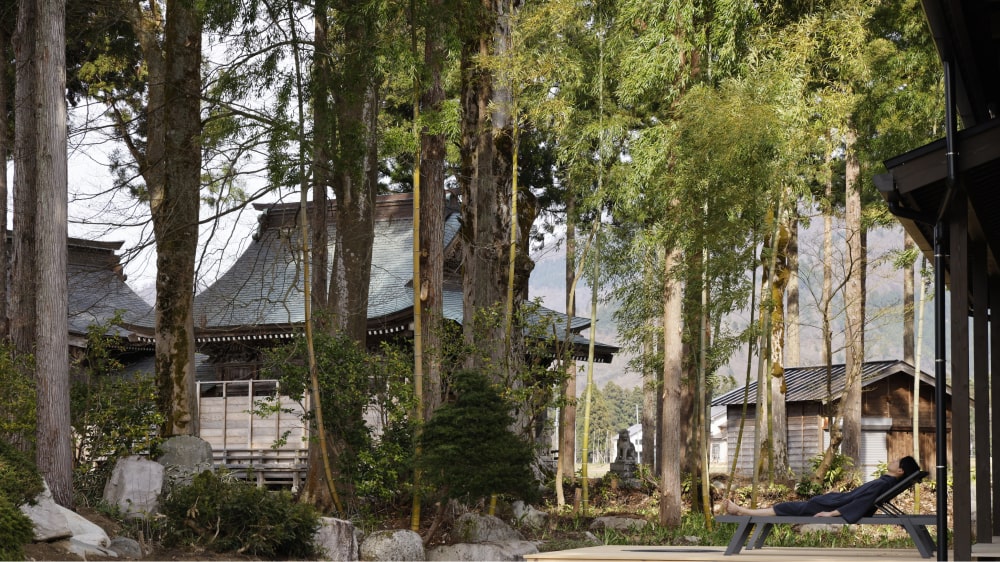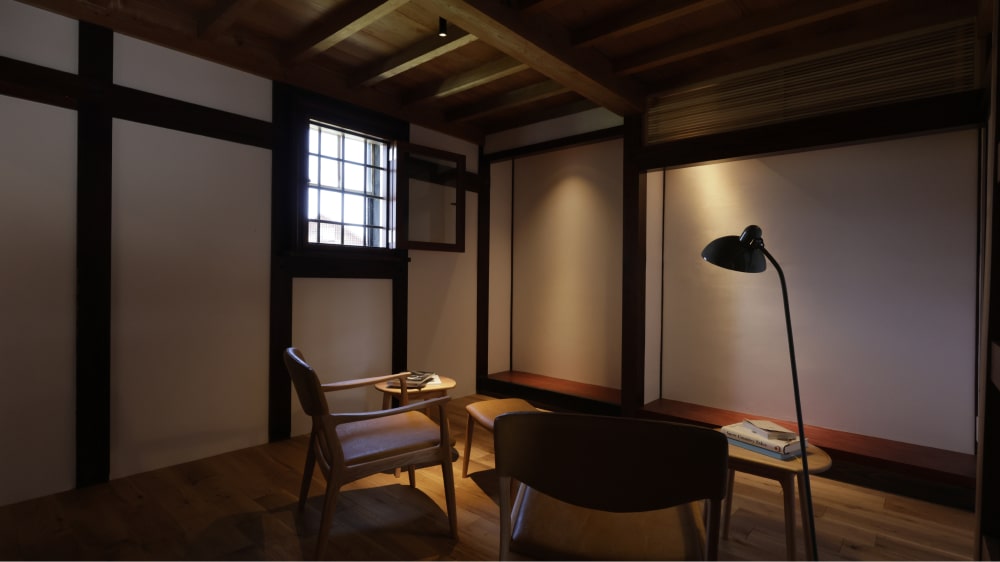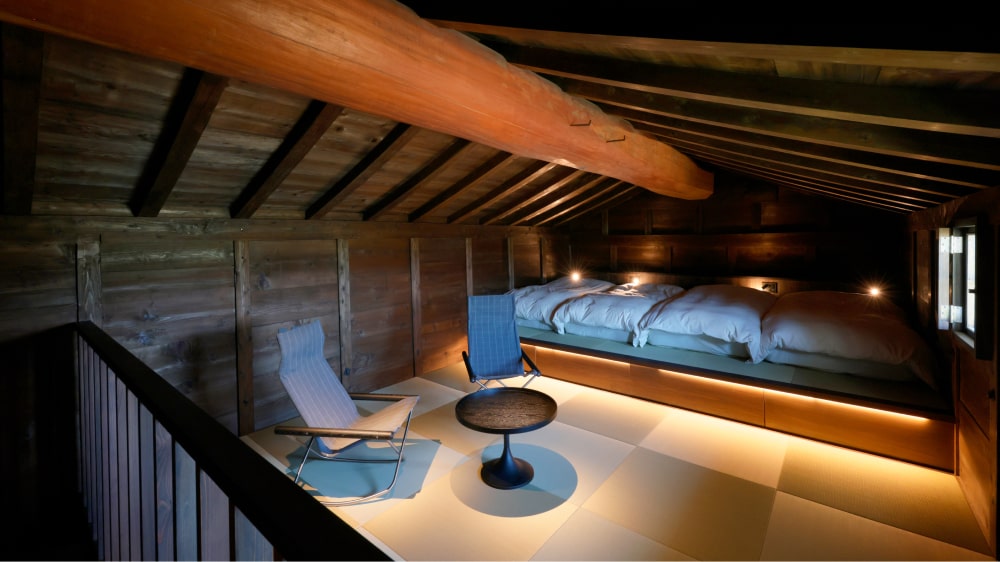Design
Enveloped in a rarefied atmosphere that seems to purify the body, the buildings at Kiroku were renovated to preserve this aura.

Kiroku, a property that uses the trees and main hall of the shrine as borrowed scenery. Rarely will you find such a luxurious space anywhere else.
Because Kiroku used to be the residence of the chief priest of the adjacent Shinto shrine, it was a simple house that eschewed luxury. In terms of its value, it was deemed as worthless as any other old vacant house, so its demolition may have been a foregone conclusion. However, we wanted to preserve this house because we witnessed how attached the locals were to it, having maintained it even after it became vacant, and we could sense its special aura as a house that once served as the chief priest's residence. When the locals approached us about taking over the house, we did not hesitate to seize the opportunity. We were very pleased to find that almost everyone at the meeting held to explain our plan to the locals agreed with our vision. Compared to Izumi and Sen, the materials were not very good, but the house had a special air about it. During the renovation, we strived to express that air spatially, by designing rooms that let the actual breeze pass through. We installed large windows on both the north and south sides of the house to allow our guests, no matter where they be in the house, to experience the passing breeze. Naturally, we also insulated the property thoroughly to keep wind out in the winter. Because it was a modest house to begin with, we avoided making a strong statement with the renovation, instead focusing on making the house more comfortable. We hope you have a relaxing stay as you enjoy the view of the garden that connects Kiroku to the shrine grounds.
Toru Iwasa of Jiyujin oversaw the basic design and creative direction of KIROKU.
Toru Iwasa

Toru Iwasa was born in Tokyo in 1967. He started Jiyujin as a design firm in 1989 while still enrolled at Musashino Art University, later assuming the post of editor after launching the lifestyle magazine Jiyujin in 2000. He oversaw the creative direction of Satoyama Jujo, which opened in 2014 in the Osawayama Onsen district of Niigata Prefecture and won the Good Design Award Best 100 the same year. He also oversees the planning, direction, and operational support for other hotels and restaurants outside of the Jiyujin group. He currently serves as a Visiting Professor at Tama Art University and Musashino Art University. Since 2021, he has served as a judge for the Good Design Award.
[Major Awards]
Good Design Award Best 100 (for Satoyama Jujo) (2014); Forbes Japan “55 Local Innovators” (2017); Good Design Award Best 100 (for Hakone Honbako) (2019); Special Prize, Cool Japan Matching Award 2019 (for Hotel Koo Otsu Hyakucho) (2020)



